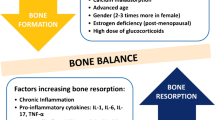Abstract
In order to establish what contributes to elevated levels of soluble CD14 (sCD14) in rheumatoid arthritis (RA) plasma, levels of sCD14 were compared in RA-paired plasma and synovial fluids and, further, in the culture supernatants of monocyte-rich fractions from patients with RA and healthy donors, and macrophage-rich fractions from RA synovial tissues. The results showed elevated sCD14 in RA synovial fluid in 9 of 16 paired samples and in RA macrophage-rich fractions, suggesting that elevated sCD14 in RA plasma might be due to the sCD14 production by RA synovial macrophages. From the molecular analysis of elevated sCD14, the proteolytic cleavage of membranous CD14 (mCD14) was important in accelerated sCD14 production. Lipopolysaccharides (LPS) at low concentrations and sCD14 increased the ICAM-1 expression on RA synovial fibroblasts. This result implies that in vivo RA synovial fibroblasts may be sensitive to LPS in the presence of sCD14 and LPS-binding protein (LBP).
Similar content being viewed by others
Author information
Authors and Affiliations
Additional information
Received: 4 October 1997 / Accepted: 20 January 1998
Rights and permissions
About this article
Cite this article
Yu, S., Nakashima, N., Xu, B. et al. Pathological significance of elevated soluble CD14 production in rheumatoid arthritis: in the presence of soluble CD14, lipopolysaccharides at low concentrations activate RA synovial fibroblasts. Rheumatology International 17, 237–243 (1998). https://doi.org/10.1007/s002960050041
Issue Date:
DOI: https://doi.org/10.1007/s002960050041




